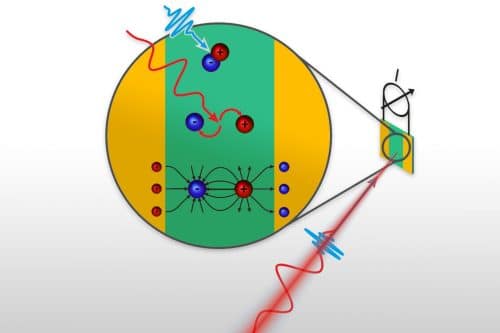Optoelectronics, a sub-discipline of photonics, is the study and application of light-emitting or light-detecting devices. LEDs, optical fibres, photodiodes, etc are all optoelectronic devices. The signal transmission in optoelectronics is fast, but researchers at TU Wien (Vienna), TU Graz and the Max Planck Institute of Quantum Optics in Garching have now identified the limit for how fast optoelectronics could get.
According to their study published in the scientific journal “Nature Communications”, the speed can definitely not be increased beyond one petahertz (one million gigahertz), even if the material is excited in an optimal way with laser pulses. This is because quantum-mechanical processes that are responsible for the generation of electric current take a certain amount of time, thus limiting the speed of signal generation and signal transmission.

Electric current and electromagnetic field are closely linked to each other since the electric current is controlled by electromagnetic fields in microelectronics. In order to derive the speed limit of the conversion of electromagnetic fields to current, the team used laser pulses – the fastest, most precise electromagnetic fields available. When any material is hit with laser pulses with a wavelength in the extreme UV range, electrons are excited and move to a higher energy level where they can move freely. This process is called the creation of free charge carriers, and this happens in a very short amount of time – on a time scale of atto- or femtoseconds.
“For a long time, such processes were considered instantaneous,” says Prof. Christoph Lemell (TU Wien). “Today, however, we have the necessary technology to study the time evolution of these ultrafast processes in detail.”
The experiments carried out in Garching and Graz, and the theoretical work and complex computer simulations done at TU Wien lead to a classic uncertainty dilemma. “We can tell exactly at which point in time the free charge carriers are created, but not in which energy state they are,” says Christoph Lemell. “Solids have different energy bands, and with short laser pulses many of them are inevitably populated by free charge carriers at the same time.”
As the laser pulses become shorter, their frequency becomes higher and it becomes difficult to determine the energy these electrons carry. And if that is unknown, we can no longer control them and the resulting electric current is distorted. “It turns out that about one petahertz is an upper limit for controlled optoelectronic processes,” says Joachim Burgdörfer. That being said, we still have a long time before optoelectronic devices reach the petahertz level.




